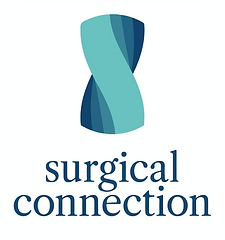Our patient is a digital user
- Mariana Cáceres

- Aug 31, 2024
- 2 min read
Updated: Oct 6, 2024
In today's rapidly evolving digital landscape we are gradually adapting to the need to be present on the Internet or to incorporate tools that improve all areas of consultation, from administration to monitoring the patient from their devices. As we step into 2024, marked by the prevalence of AI and advanced devices, we encounter a new patient profile that demands our attention and adaptation. Right now, this gradual adaptation needs a break to place us in the context of 2024.
Why do we need this pause to move forward? Let's take a moment to empathize with our patients and reflect on our own experiences. Since the early 2000s, the use of connected personal devices has become widespread, and in 2011 it happened with the Internet devices. Consider your own journey with technology. Even if you were not an early adopter, many of your patients likely were. This divergence in digital immersion highlights the need to reassess our approach to patient care. We must avoid projecting our experiences onto our patients and instead strive to understand their unique digital journeys.
So we have to reorient the generalizations that we use to make decisions for our practice. Think about maps, there were those who had the gift of orientation; in 2024 we coexist with those who can't get there without a navigation system like waze, googlemaps or galileo and those who boast that they don't need them to get anywhere in their city. The point we all agree on is that we use GPS to find out if there is a traffic jam or not, or if we have an emergency of any kind in a vacation city, we look for a hospital on the map and choose the nearest route.
For healthcare providers, this means our clinics and practices must be easily accessible on digital maps and highly visible to patients. This visibility means that we also have to make geographical decisions and possibly change our marketing strategies. Understanding how patients search for healthcare services helps us build long-term, trust-based relationships, leading to full appointment schedules and better treatment adherence.
Finally, I propose 7 keys to start analyzing the context 2024 and I will discuss each one later in this space:
Reinterpret geography.
Reinterpret time
Patient use of personal devices and health applications.
Tools for health professionals
Ethical implications on health technologies
Patient communication channels
Digital determinants of health
Our patients are now digital users in all facets of their lives, including education, transportation, shopping, tax payments, and entertainment. This shift necessitates that we, as healthcare providers, adapt to remain relevant and effective. Our role as their source of health and wellness information has evolved, presenting new professional responsibilities and opportunities.
.png)


Comments